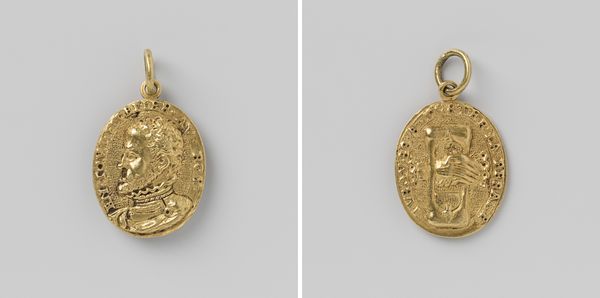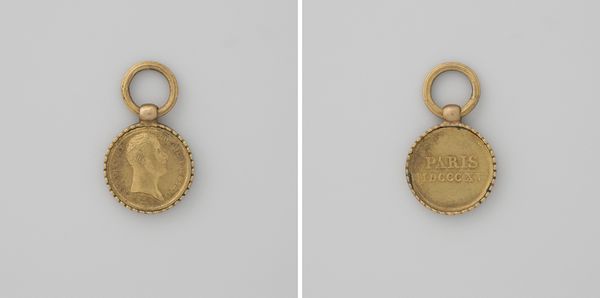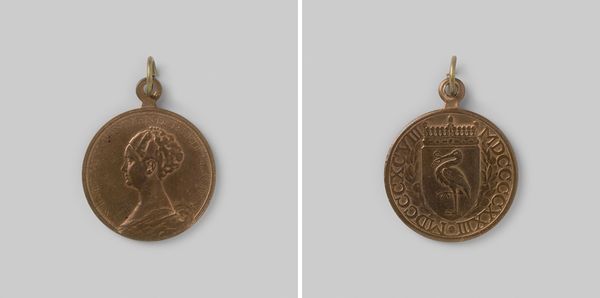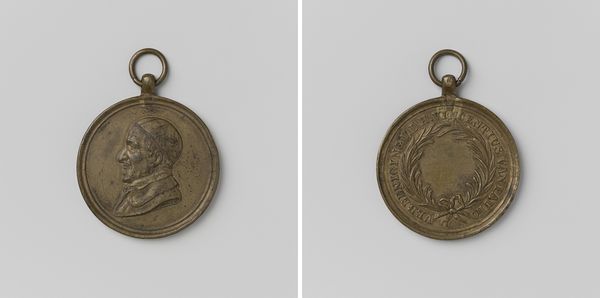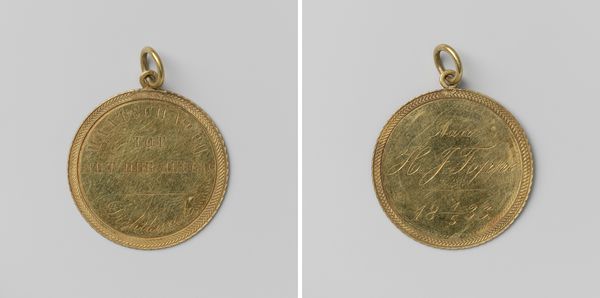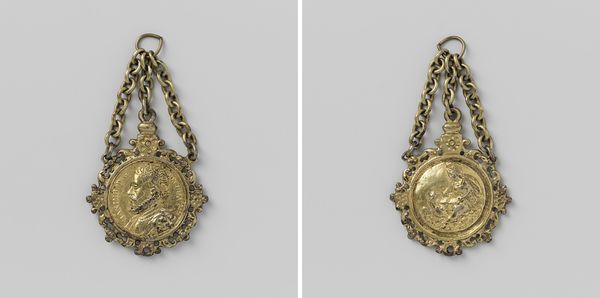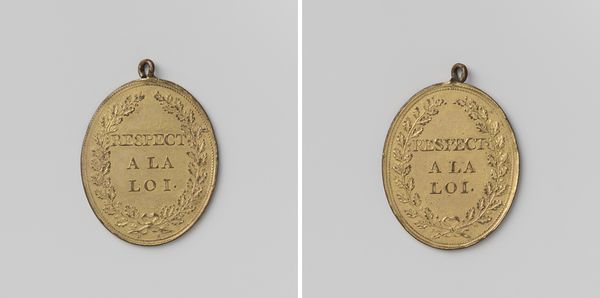
Dimensions: height 9.8 cm, width 7.7 cm, weight 75.60 gr
Copyright: Rijks Museum: Open Domain
Curator: Here we have "Death of Jacob Mossel," an engraving worked in metal, likely dating from somewhere between 1761 and 1765, and by an anonymous hand. What's your first take on it? Editor: Strikingly minimal. The texture of the gold contrasts with the faint engraving, almost as if the images and text are trying to recede. Is it meant to be carried or worn, given the ring at the top? Curator: Indeed. It served as a memorial pendant. Jacob Mossel was, for a time, the Governor-General of the Dutch East Indies, a significant figure in Dutch colonial history. These commemorative objects were often produced after the death of prominent individuals. Editor: So its function is to broadcast prestige through materiality, and perpetuate power through carefully wrought iconography? I find myself gravitating to the imagery on the face of the pendant; a central shield seems to carry the weight of the design, doesn’t it? Curator: Precisely. The pendant encodes its memorial message with meticulous visual rhetoric: consider the symbolic arms, suggesting lineage and status, and the careful arrangement of martial motifs evoking authority. Notice, too, the inscription on the reverse. Editor: Yes, the writing certainly asserts a particular legacy; almost an official account of Jacob Mossel’s tenure. I am particularly drawn to the ouroboros quality of the pendant’s rope border—the ouroboros itself being a perfect symbol of eternity and, I guess, remembrance. It complements the engraved scene so well. Curator: An astute observation! That ouroboros creates an important visual loop—the narrative of power beginning and ending within the space of this object. It’s not merely about memorializing Mossel but solidifying the very structure of colonial authority in a tangible, portable form. Editor: These intimate artifacts underscore how history resides not only in grand narratives but also in meticulously crafted objects that circulate and embed themselves in daily life. Curator: It's interesting to observe how something so intimately scaled as this pendant reflects vast geopolitical power structures and commemorative intentions that play a significant role in collective historical memory.
Comments
rijksmuseum about 2 years ago
⋮
In the past, important events were graced with a medal, especially in well-to-do families. The occasion for this was usually a birth, wedding, or death. These medals not only remained in the family as a memento, but were also given to the guests at the baptism, wedding party, or funeral. Sometimes they were purely private in character, such as the gold medal a grandfather gave to his grandson.
Join the conversation
Join millions of artists and users on Artera today and experience the ultimate creative platform.
